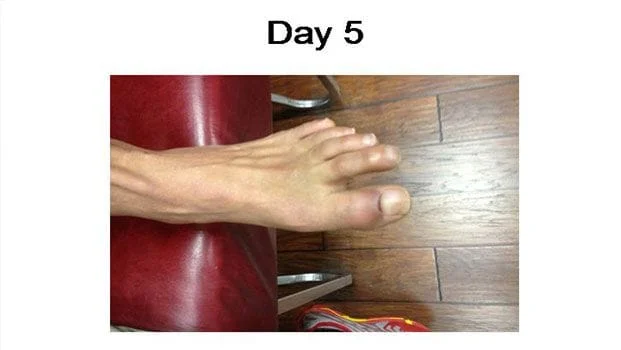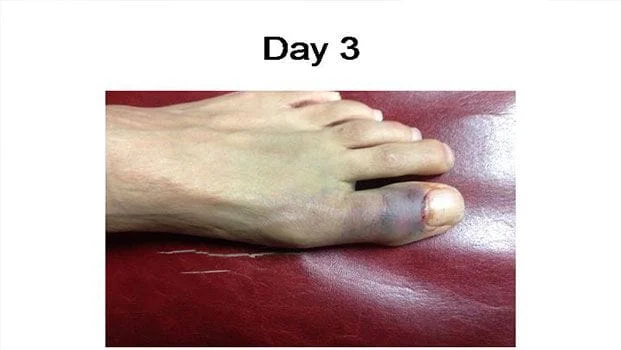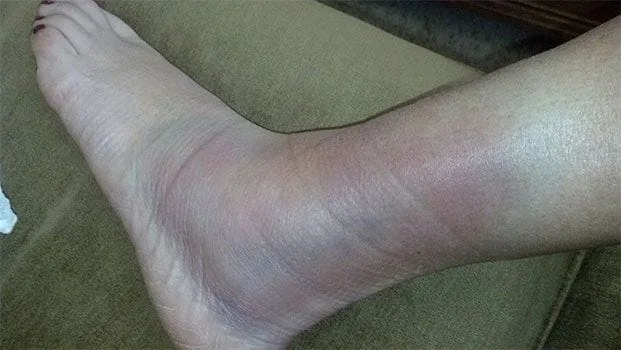Cold Laser Therapy
The Laser is used to enhance tissue recovery and advance/speed up injury healing time. 3LT™ or Low Level Laser Therapy promotes healing in many conditions, including chronic/acute pain, wound healing and other joint and neurological conditions.
What is a TRUE Laser?
The Erchonia Laser is a TRUE LASER, fully compliant to the definitions set forth by those great men of science such as Bose and Einstein who predicted LASER in 1924 and the contemporary physicists Schawlow and Townes who brought LASER into the modern age. LASER is an acronym for Light Amplification by stimulated Emission of Radiation. Light created in this way, is then culminated and directed into an intense beam of coherent light through the use of cathode and anode reflecting components in order to produce a single stable frequency. According to Webster's Dictionary, Lasers are coherent or marked by logical consistency. The Erchonia laser meets all the scientifically defined attributes of a laser and is therefore classified as a TRUE laser.
What is low-level laser?
Unlike high power lasers that use heat and destroy tissue, low energy lasers affect the cellular energy of the underlying tissue. Hot lasers have a thermal effect and have an output of 1MW or above.Cold (or) Low Level Lasers do not have a thermal effect on tissue, lasers that stimulate biological function have an output below 10mw- milliwatts (ten- one thousands of a watt).
What is 3LT™ - Low Level Laser Therapy?
Low Level Laser Therapy (3LT™) refers to the modality of applying a "low" energy or "low level" laser to tissue that stimulates cellular processes and thereby enhancing biochemical reactions. For example, studies show that LLLT increases ATP production in the mitochondria of the cell. Since more energy is now available, the cell may utilize this fuel to function or operate more efficiently.
How does it work?
Many theories exist as to the mechanism of action for Low Level Laser Therapy(3LT™) but simply put, photonic energy is absorbed by the photo acceptor sites on the cell membrane which trigger a secondary messenger to initiate a cascade of intracellular signals that initiate, inhibit or accelerate biological processes such as wound healing, inflammation, or pain management.
What conditions can be treated?
Low Level Laser Therapy(3LT™) has been successfully used to treat many conditions such as acute and chronic pain reduction, repetitive use disorders like carpal tunnel syndrome, soft tissue strains and sprains, inflammation reduction, enhanced tissue wound healing, and cell regeneration.
Are there any side effects?
There are over 1500 published studies and not one of them mentions any negative side effects of semi-conductor diode lasers at the 5mW range like the Erchonia 3LT™ Lasers. Low Level Lasers are safe, non-toxic and non-invasive, there has not been a recorded side effect in over 1700 publications. There are some nessecary common sense precautions that need to be considered, such as avoiding pointing the laser beam directly into the eye and maintating it there, which could prove to be damaging to the eye.
What makes one laser different from another?
A laser can differ in its wavelength, power source or whether it is a continuous or pulsed wave form. The first lasers were used to cut, cauterize or ablate tissue and were classified as "hot' lasers. "Cold", "Low Energy" or "Low Level" lasers are used to enhance metabolic activity at the cellular level through non-thermal reactions.
What is wavelength? And do the different wavelengths matter?
Light is measured in wavelengths and is expressed in units of nanometers (nm). Different wavelengths have different energy levels and can have various effects on tissue. For example, the Erchonia 3LT™ Laser is 635 nanometers, which is found within the "red" spectrum of visible light (400-800 nm) and has anabolic tissue effects, whereas, radiation that has a wavelength shorter than 320 nm (ultraviolet (UV), gamma rays, x-rays) has ionizing effects on cells and can be harmful even in small doses.
What is the difference between Lasers and LED's (light emitting diodes)?
Lasers are monochromatic (single color wavelength), collimated (non-divergent) and coherent (wavelengths in- phase) in contrast, LED's are neither coherent nor collimated and generate a broader band of wavelengths (multiple). In addition, a significant difference between the two is the power output. The peak power output of lasers is measured in watts, while that of LED's, is measured in milliwatts. Also, LED's usually have a 50% duty cycle, meaning that they are "on" 50% of the time and "off" 50% of the time regardless of what frequency (pulses per second) setting is used.
There are many light emitting products on the market today, claiming to be lasers that do not meet scientifically defined attributes for being a true laser. For example, products that use Light Emitting Diodes or LED's as they are more commonly known, do in fact produce light, however the light is not intense, producing very little energy and is non-coherent, similar to light produced by common household light bulbs. Non-coherent or non-culminated light is the result of photons moving in random directions at random times, generating random frequencies. The most common use of LED's is in electronic equipment, such as cell phones and VCRs, to inform the users that the item is ON. LED's are cheap and easy to reproduce (Pontinen 1992). Obviously, these devices are NOT lasers. This misconception is in large part a by-product of marketing. Some sales professional use the word "laser" in order to describe a process such as in "laser pointers" which refers more to mankind's collective imagination than scientific comprehension.
How long are the treatments?
Treatments can vary in time from seconds to minutes depending on the condition. Research studies show that there may be a dose dependent response, so it may be more effective to treat at lower doses at multiple intervals then to treat a single time with a high dose.
How long does the treatment last?
A treatment plan may vary, depending on the condition. For instance, an acute soft tissue injury or open wound may require multiple short treatments initially then the interval between treatments will lengthen as the condition improves.





